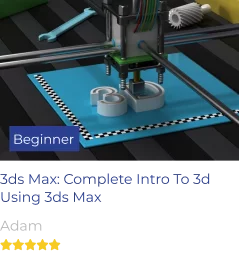You’ve probably contemplated for a while now and all of the hesitations and doubts have finally led up to this life-changing decision– you’re ready to drop your nine-to-five job to take your hobby to the next level and turn it into a sustainable career. Before anything else, remember to keep in mind that this journey is not going to be easy and you will need more than just your camera and passion to become successful in your business. Assuming that you’ve already got your photography skills down, we’re going to get straight to the point on how to start your own photography studio business.
Evaluate yourself first
Although we’re pretty sure that you’ve thought about this long before you decided to take the plunge, it’s important to properly reflect on who you are as a photographer, as well as a businessman (or woman). You could do this by asking yourself a few simple questions. Make sure to write or type out your answers so you can go over them once you’re done or when you feel like you’ve lost the motivation to push through.
1. Ask yourself, “What do I love about photography and what am I actually good at?”
-
- By asking yourself this, you’re defining your purpose. Do you love seeing your clients or models in awe when you hand over their pictures? Do you feel fulfilled seeing your photos on magazines or billboards? When you ask yourself what you’re good at, you’re also determining your niche. Will you be doing studio portrait photography? If so, for whom? Or would you prefer product photography? Think about it.
2. Ask yourself, “What am I good at in terms of business? What am I lacking?”
-
- You need to be able to list down your strengths as a businessman (or woman). Know your way around different social media platforms? Great, at least that’s going to be a breeze for you! Have a bit of a background in finance? Awesome, because you’ll need it. Got a big network of other photographers and models? Perfect. List these down along with any knowledge or skill that could contribute to your business.
-
- You also need to accept that you won’t know everything, so list down all the aspects of business that might concern you, such as the process of building your website or determining the pricing and costs.
3. Ask yourself, “How committed am I to this business?”
-
- If you’ve given up your day job to pursue this photography studio business, then you should definitely be committed. But when the numbers drop and your business runs dry and slow, how hard are you willing to work and how much are you willing to sacrifice to get it up and running again?
Create a business plan
This doesn’t have to be as complicated as it sounds; however, creating a business plan will definitely serve as a guide when dealing with future decisions. Consider it as your northern star.
First of all, set a goal or objective. Like every other business that exists, determine what your mission and vision is and be sure to align all your plans according to this. At this stage, you should also decide on your target audience and the specific services you are going to offer to them.
Once you’ve defined your objective, conduct a SWOT analysis. If you’re not aware of what this means, SWOT stands for strengths, weaknesses, opportunities, and threats. You’ve already listed out some strengths and weaknesses during the reflection stage, so feel free to add on to what you already have. Include your strengths and weaknesses in photography.
For opportunities, consider the potential of your business in your area. Is there a gap you can fill by starting your own photography studio business? As for threats, it’s self-explanatory. What are some factors that could negatively impact your business? Are there too many photography studios within a close range from your location? Take time to do this part; a SWOT analysis greatly contributes to the planning and execution of your business.
In addition to this, you have to analyze your costs and then determine your pricing. Factor in the tools, equipment, resources, and whatever you’ll be spending on to get this business going. You should also calculate your expected return on investment, as well as a one- to two-year financial forecast of your business. To create a financial forecast, however, you first need to fix your pricing. Remind yourself to price your services for profit. In other words, don’t be afraid to mark up your cost of sales three to four times the amount. This is your source of income– there is no place to underestimate your value.
Make it happen
This is the part where it all comes to life. Make sure to secure your business registration and licenses to avoid violations. If you have no idea what to do here, fear not because many are in the same boat. That’s why local business registration consultants exist.
By now, you should have already determined the location of your studio. Are you going to be home-based? That’s a great option if you want to save on rent and additional fees. You can check this online course on how to build our own home-based studio on a budget. Take note; you should have enough space to cater your clients in comfortably. Your location will definitely depend on your target market and the services you will offer.
Start thinking about the equipment you currently own. Are those enough for the kind of studio you’re setting up? Given that you are an experienced photographer, you will most likely have the camera and equipment you need, but it wouldn’t hurt to reevaluate. Maybe you’ll need a better light set up (or chairs?) – it’s a studio after all.
When you’ve finalized your location, equipment, and all the requirements needed to become a legal business, it’s time to finally work on your branding. It gets really fun and exciting here because you’ll get to create your website and your official social media accounts. If you don’t know the ropes to create a website or you simply don’t want to waste any time, hire someone to make it for you. Just be sure to communicate what you’re envisioning for your business so the designer can properly execute it on your page.
You’re also responsible for your own social media accounts. Be present on the platforms you feel will gather the most audience, whether it’s Facebook or Instagram, or both. An important thing to keep in mind is to stay consistent across all your pages. One helpful tip is to have only one username because this will make it easier to find you on different social networks. Your pages should also have the same “vibes” as each other; as much as possible, create similar (or even exact) content and design. Remember, ALL of this will serve as your online portfolio– it’s the first thing everyone is going to see when they stumble upon your page.
This could be optional, but for tax purposes, you should open another bank account for the business. It’s good to separate business and personal expenses. Finally, create terms and contracts, as well as templates for quotes and invoices. You absolutely cannot skip this part. To run a successful business, you need to manage your customer’s expectations and they also need to know what is expected of them. To avoid misunderstandings during transactions, provide a contract that addresses important issues such as cancellations, licensing, and more. You can find tons of contract templates online and you can also refer to these 10 Things Your Photography Contact Must Include.
Sell yourself
Congratulations, you’ve gotten this far. You’ve worked so hard in the initial planning up to the execution, but it doesn’t stop there. Every day is a hustle in this business and you need to keep grinding to sustain it. Here are a few things you can do to “sell yourself”:
- Maintain your social media accounts by constantly updating them and replying to messages and comments as soon as possible. People love seeing active pages with great customer service– it shows that you’re hands-on and you care about the people who want to connect with you.
- It’s also a smart move to collaborate with others to grow your network and increase your exposure. As long as it fits your niche and target audience, it wouldn’t hurt to try reaching out. It’s highly likely that they’re also looking for someone to collaborate with. (Bonus tip: If you look hard enough, you’ll find a community of photographers and clients– take this opportunity.)
- With every client, ask for referrals. When you provide excellent service, your client will be happy to trust you and refer someone to experience the same. And even if they don’t give you a referral on the spot, they’ll probably talk about you if you’ve truly made a mark on them. This is why you should give your 200% every time because the word always gets out. It’s also important to understand the value of your services and set competitive event photography pricing to effectively sell yourself to potential clients.
Every new business venture is scary, but if you’re determined enough, you’ll make it. Remind yourself every day, regardless if you’re struggling or not, that this is what you want to do. Not many have the chance to create a career out of what they love, but you do.
Ready to move up in your career? Click here to get started.




